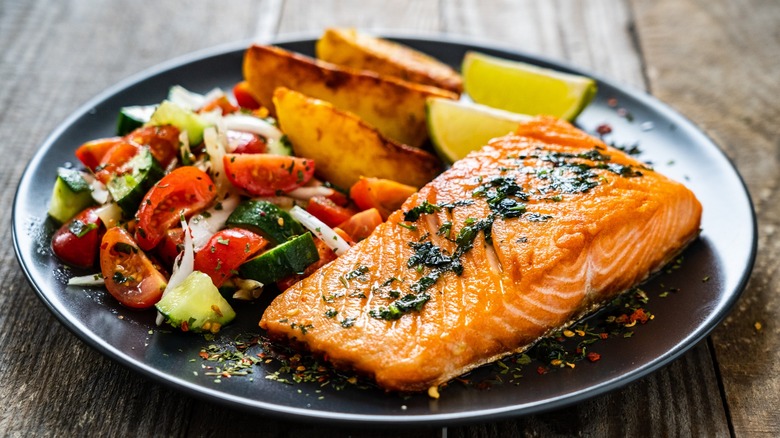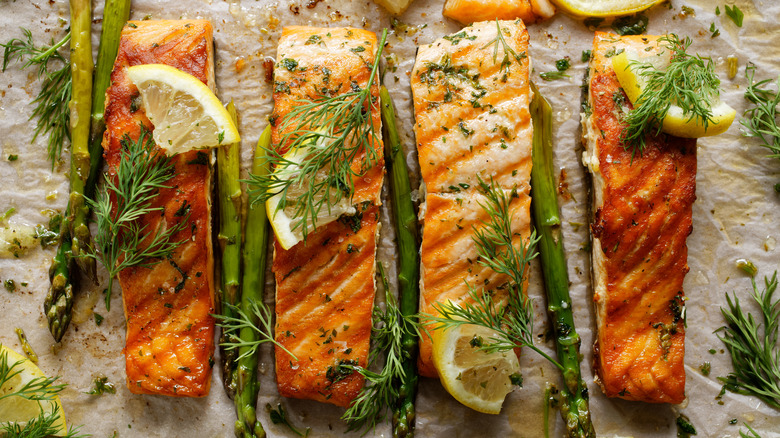The Most Important Step To Take Before Freezing Cooked Salmon
Most people agree that leftover frozen-then-reheated salmon can never quite match the allure of freshly cooked fish. However, since having extra food after dinner is sometimes inevitable, you can employ a simple strategy when freezing your cooked fish to preserve most of its original goodness. The most crucial step is to ensure proper cooling and wrapping of the salmon before freezing.
Freezing salmon while it's still hot can inadvertently raise the temperature in your freezer, leading to partial defrosting and potential food safety issues. Besides cooling, wrapping your salmon is key. First, cover the fish in plastic wrap before placing it in a resealable freezer bag. This double-layered wrapping acts as an extra shield against freezer burn, the primary factor in the loss of flavor and texture in frozen foods.
Freezer burn happens when the cold, dry air of the freezer comes into contact with your food, dehydrating it from the surface. The telltale sign is frosty-looking produce. Once this occurs, there's no way to reverse the damage. To avoid it, the plastic wrap should be tightly fitted around the salmon, minimizing air pockets. When you place it in the freezer bag, expel as much air as possible before sealing it. The less air surrounding your salmon, the more shielded it is from the unforgiving conditions of the freezer. Lastly, don't forget to label the freezer bag with the freezing date. This small step is a big help in tracking how long your salmon has been stored.
Thawing and reheating cooked salmon
Once you've mastered the art of freezing cooked salmon, you'll want to know how long it can be kept frozen and how to properly thaw and reheat it for the best eating experience. Cooked salmon can last in the freezer for up to 3 months. This duration ensures that when you're ready to savor it again, it retains much of its original flavor and texture.
Thaw your salmon carefully. The safest and most effective method is to move it from the freezer to the refrigerator, allowing it to thaw gradually. This slow process helps preserve the texture of the fish and prevents any potential bacterial growth that can occur at room temperature. Depending on its size, thawing can take several hours or even require an overnight stay in the fridge.
When it comes to reheating salmon, the key is to warm it without drying it out. Place the thawed fish on a rimmed baking tray. Consider adding a splash of water, oil, or lemon juice to the tray to help maintain moisture and even enhance the flavor of the salmon. Then, loosely cover the tray with foil. Now, pop the fish in a preheated oven between 275 and 300 degrees Fahrenheit and let it reheat for about 15 minutes. When you're ready to serve, pop some oil or butter on top to replenish lost moisture from freezing and reheating. With this method, your salmon remains moist and delicious, almost as good as when freshly cooked.

